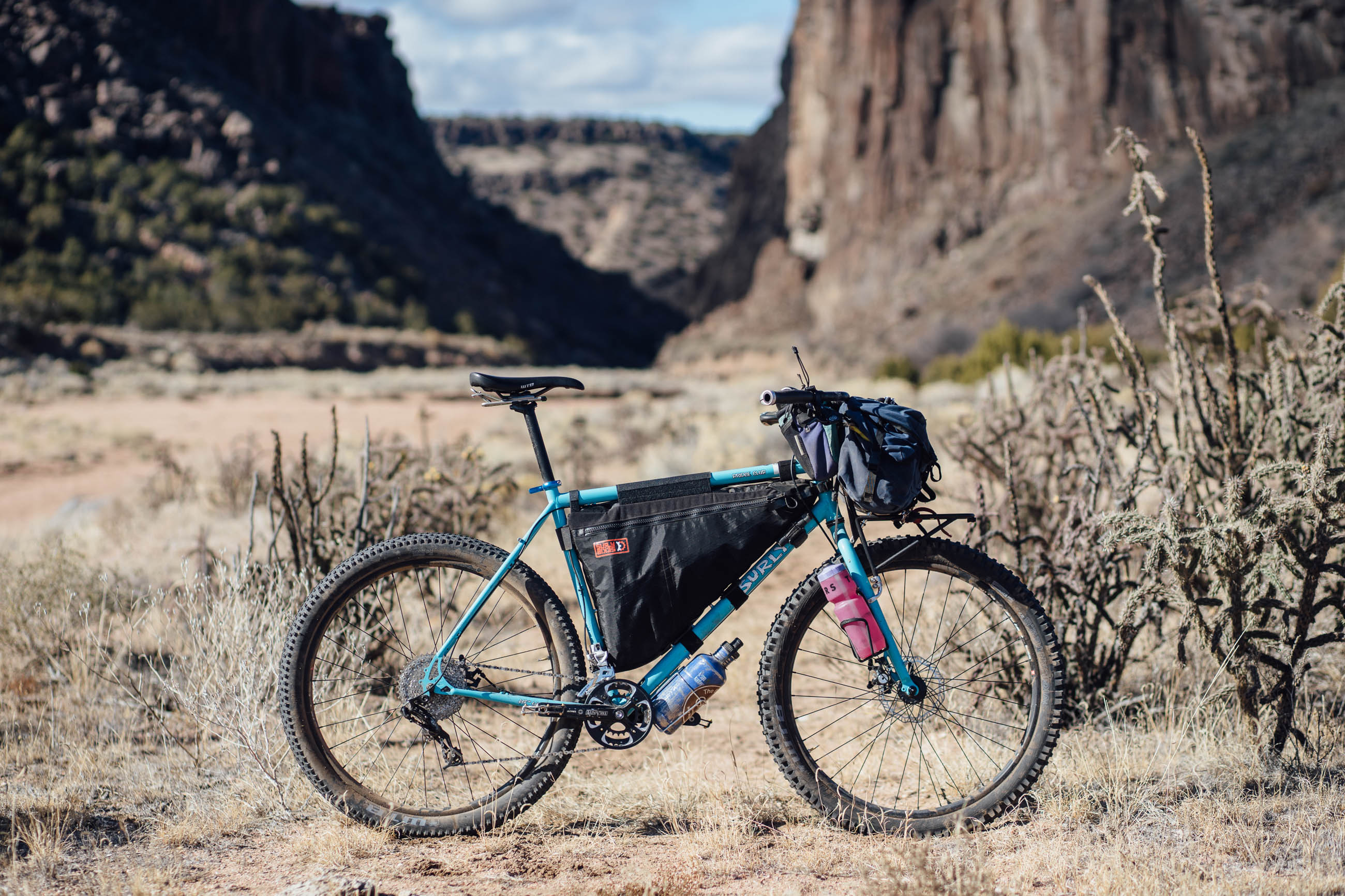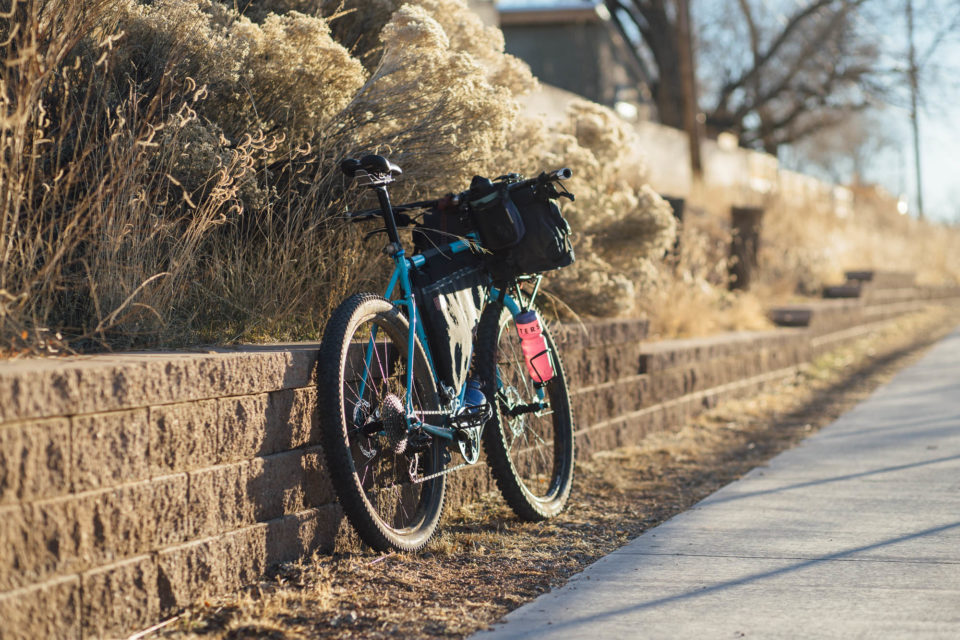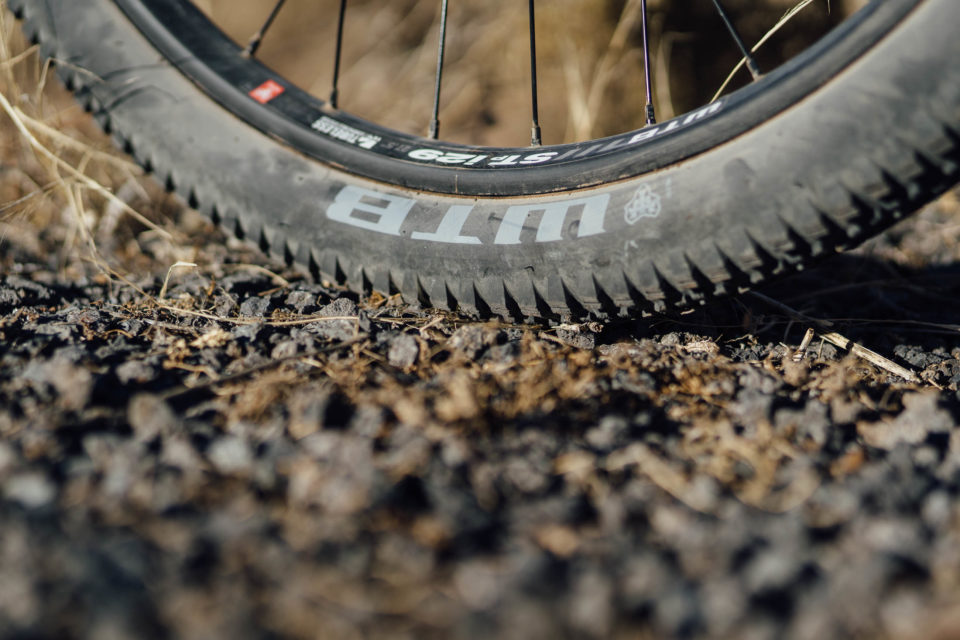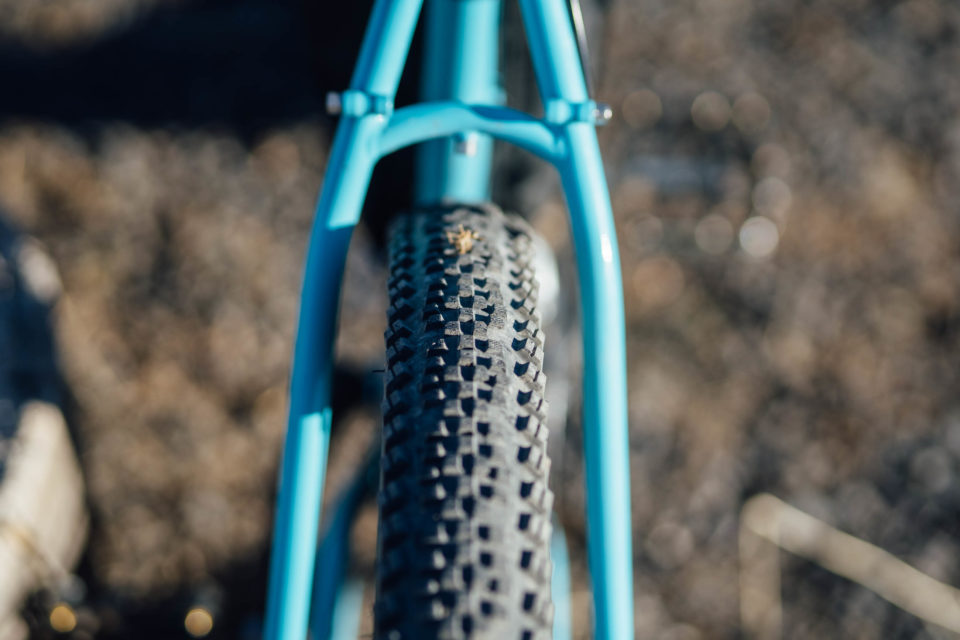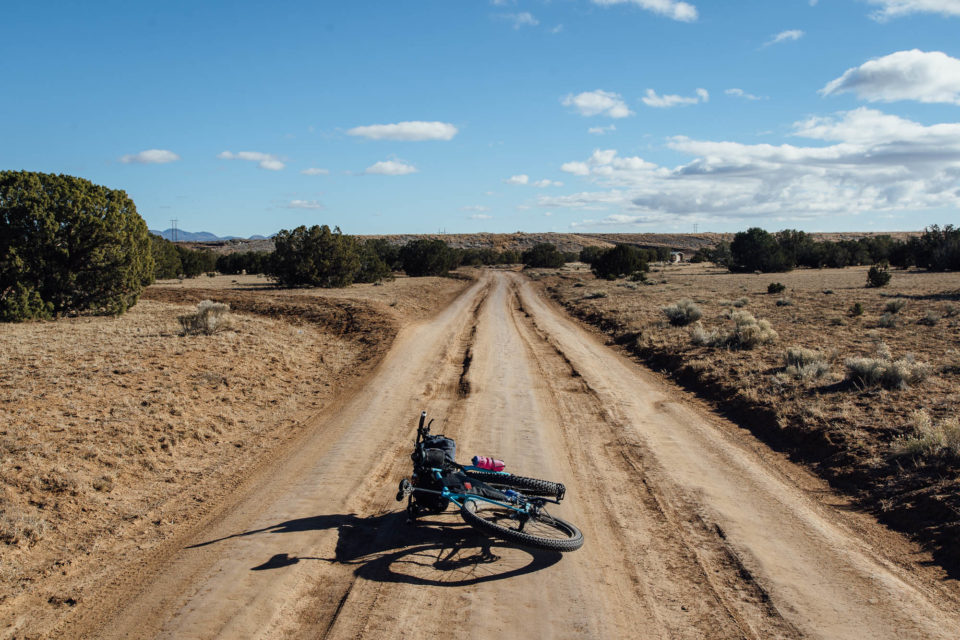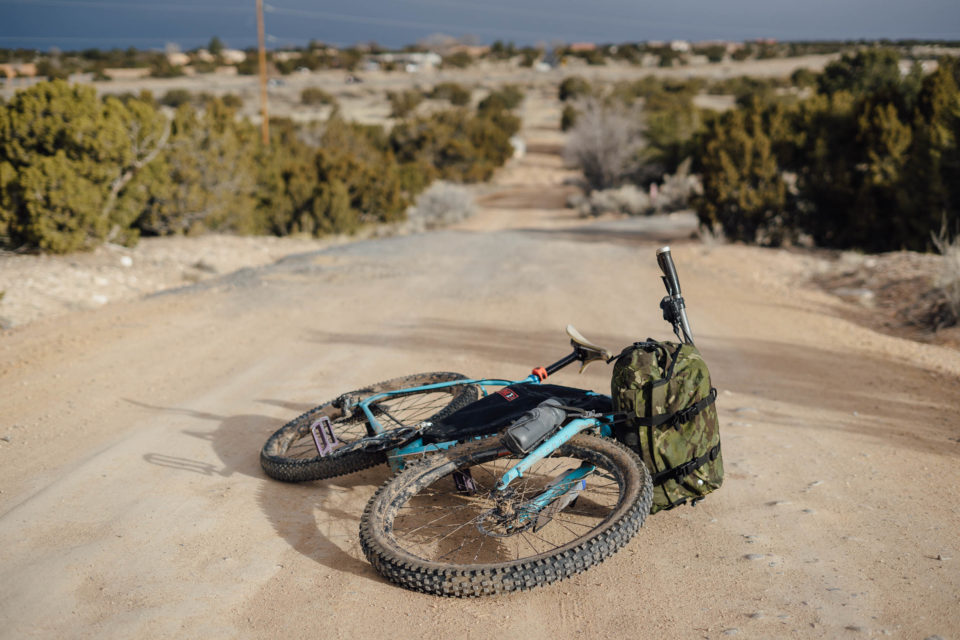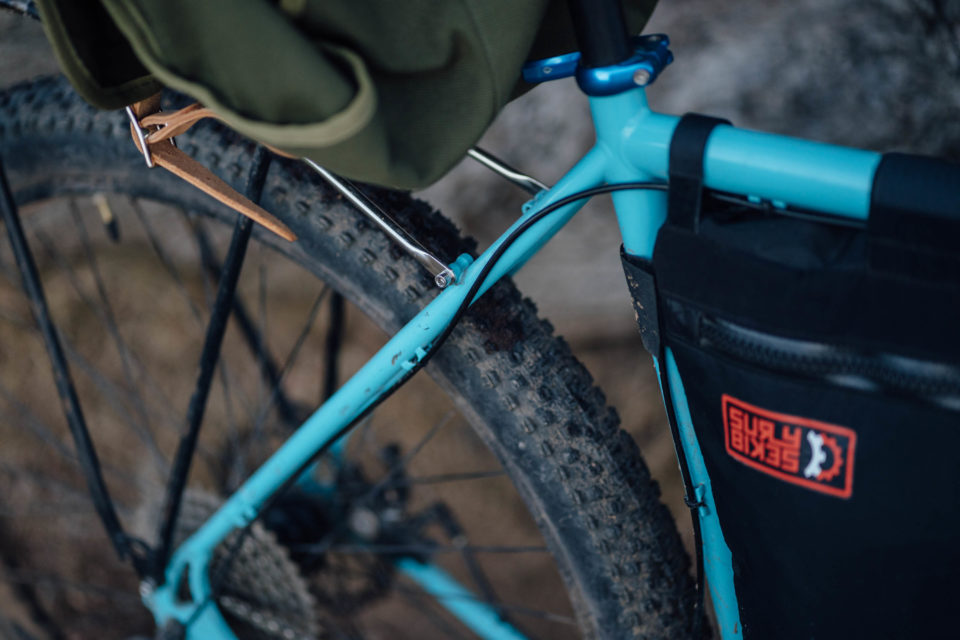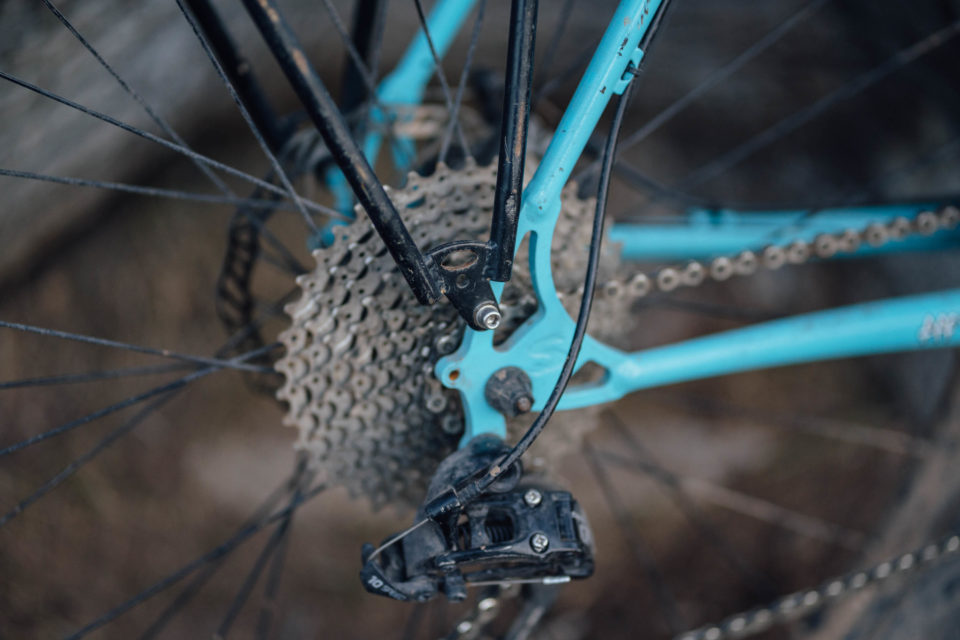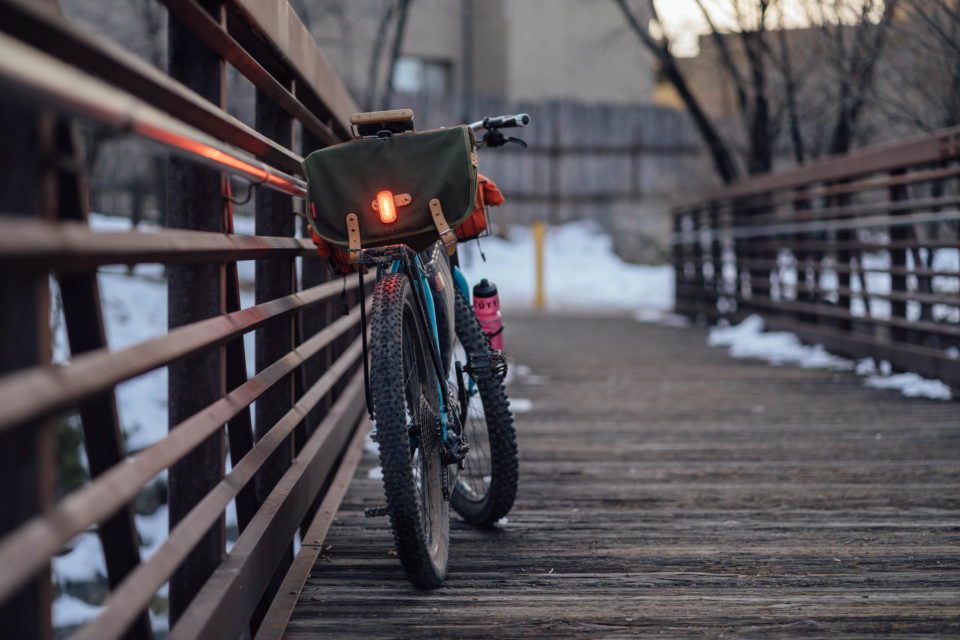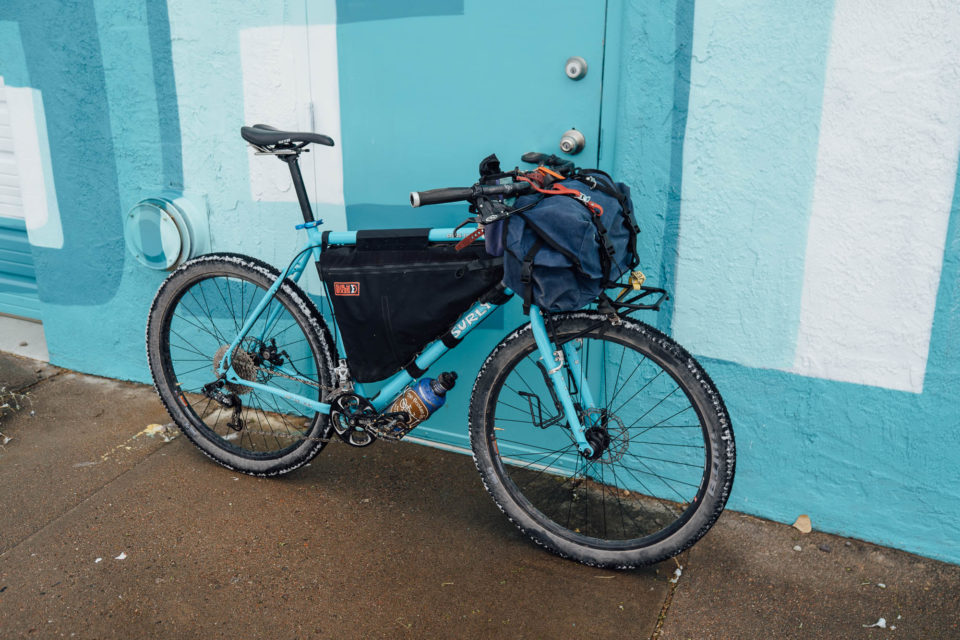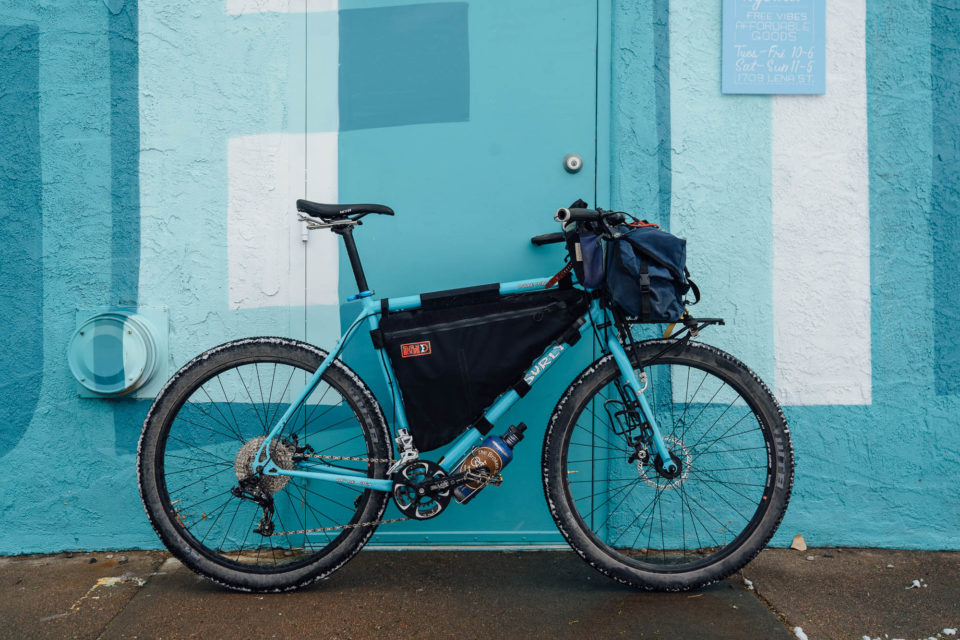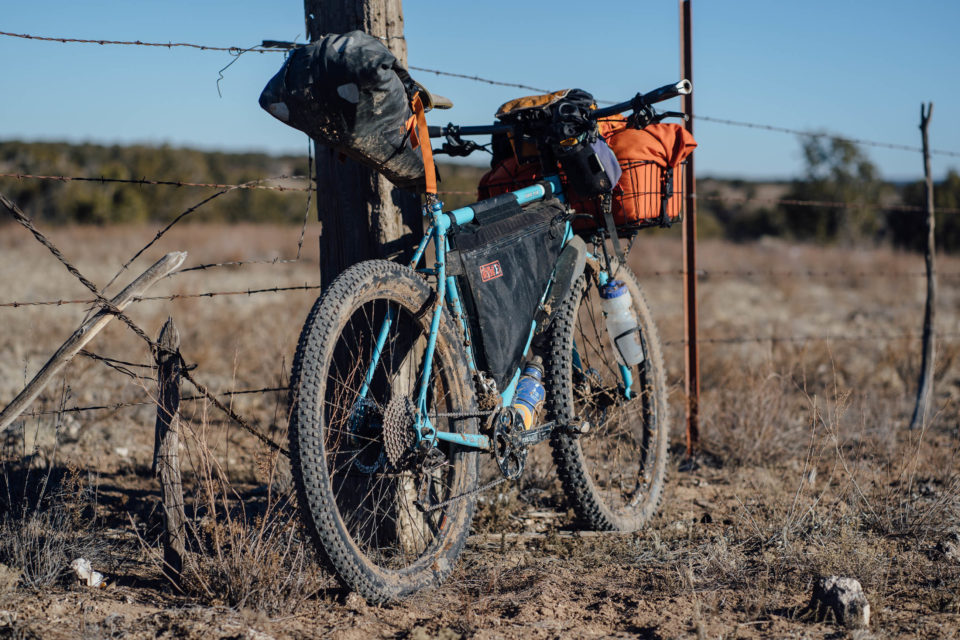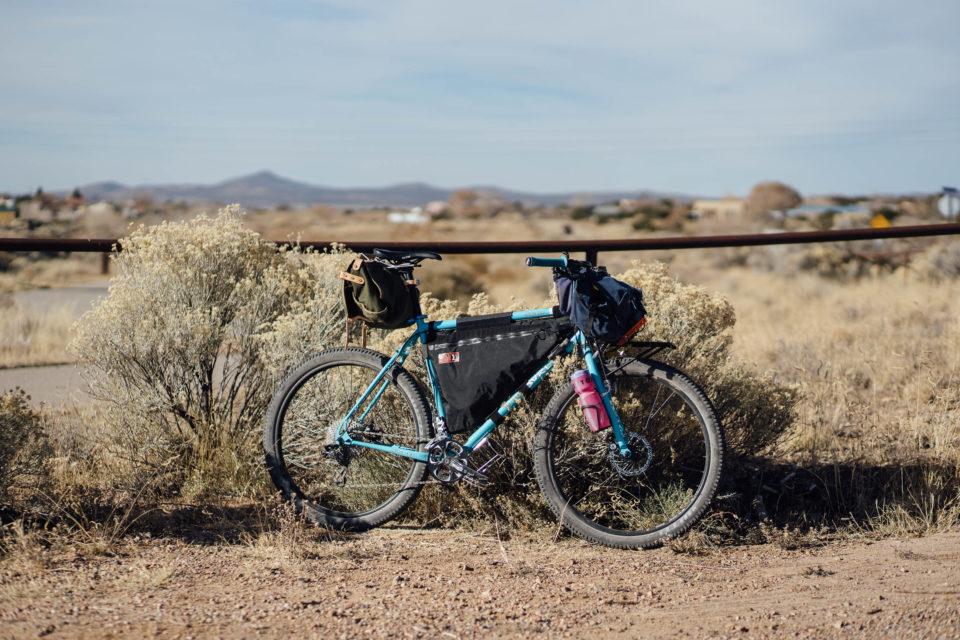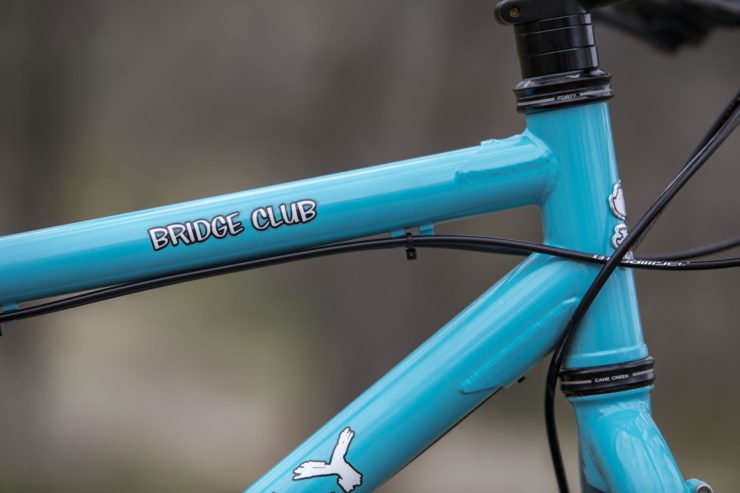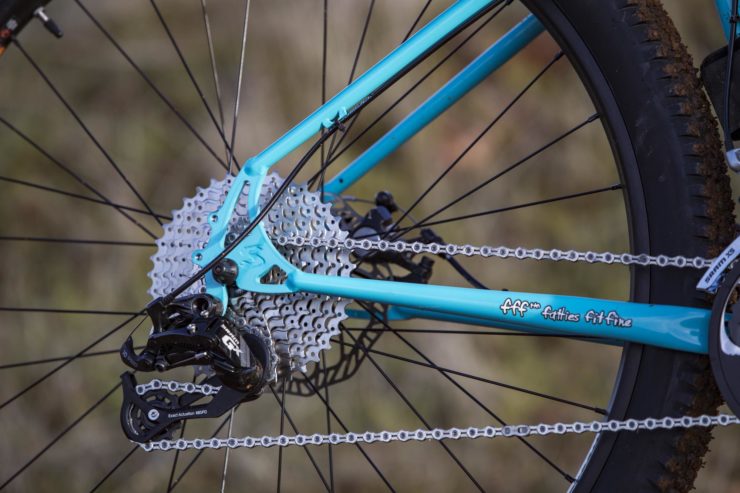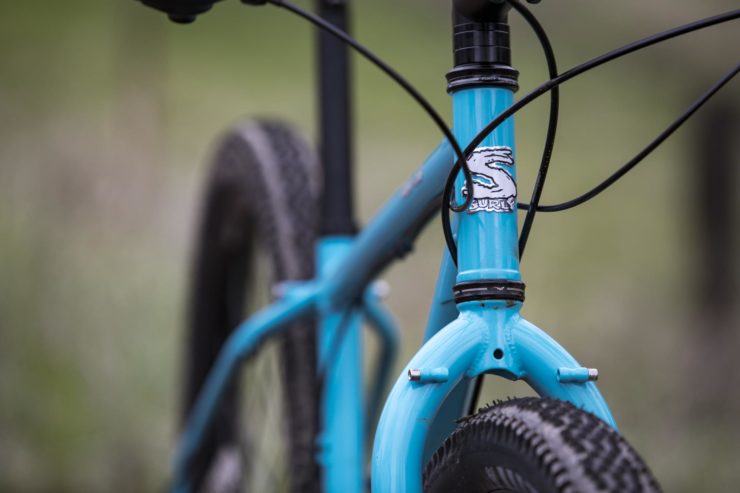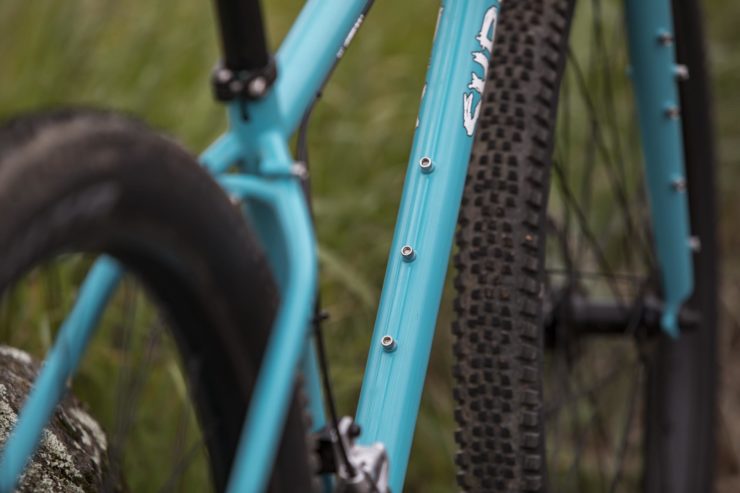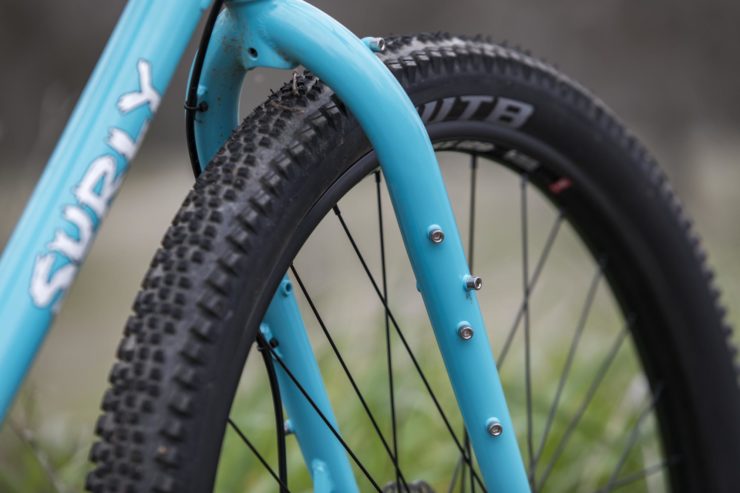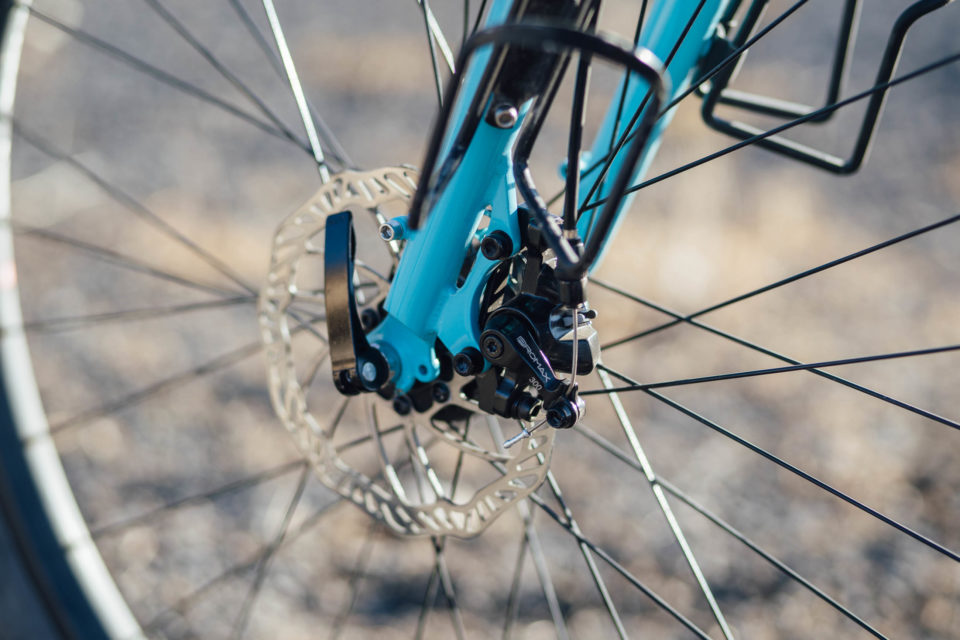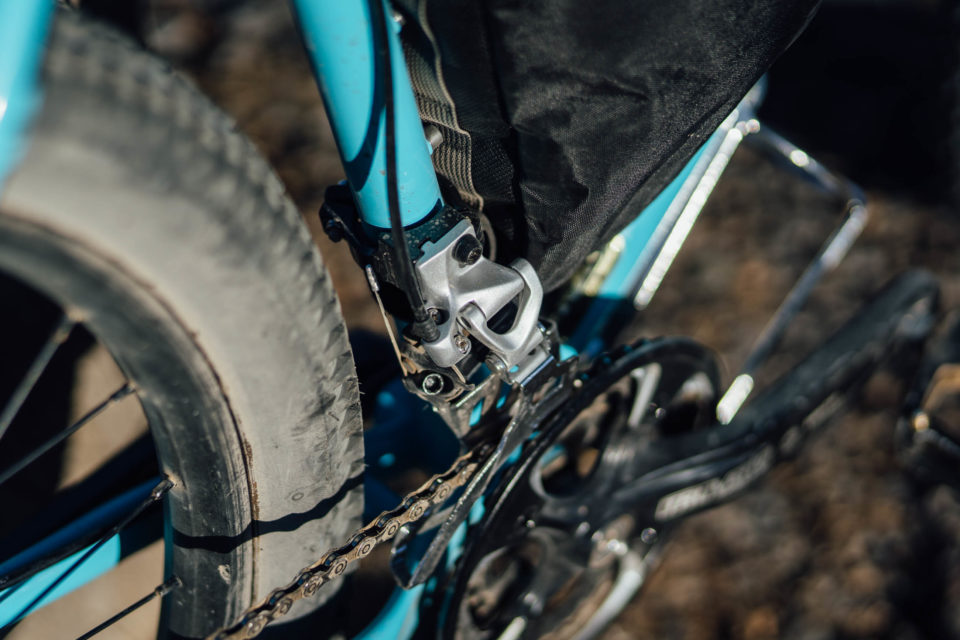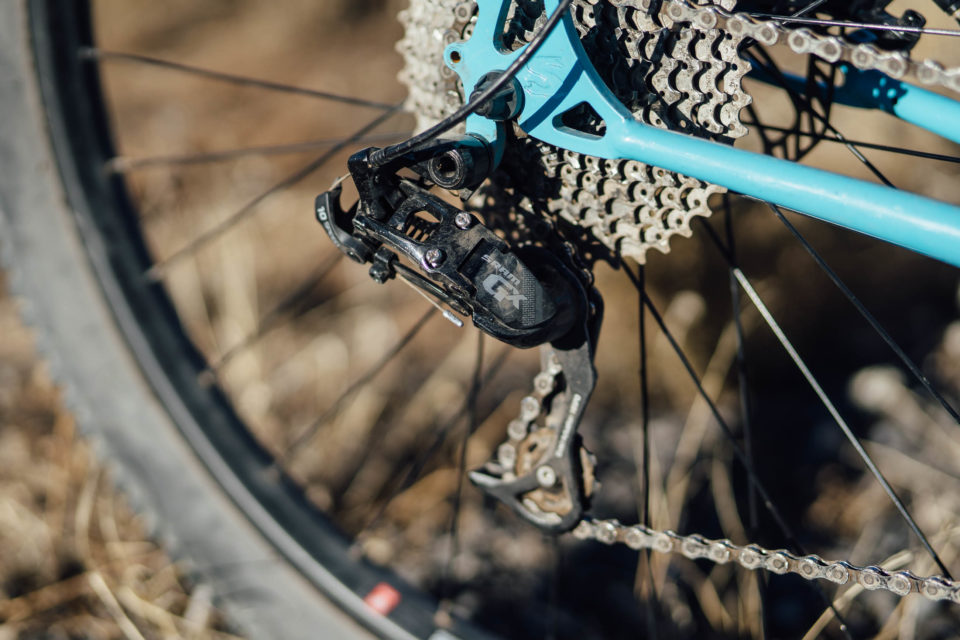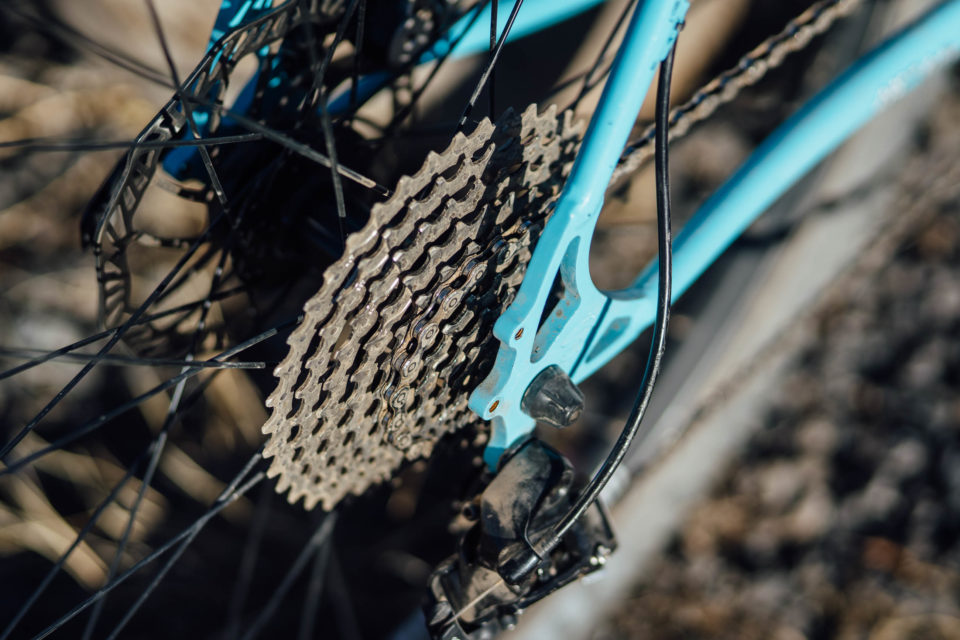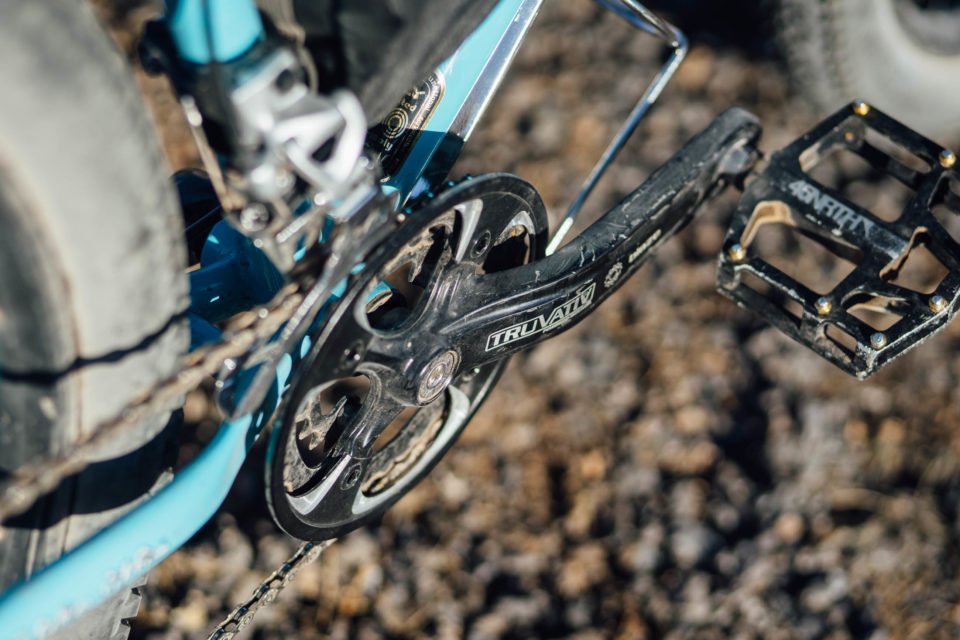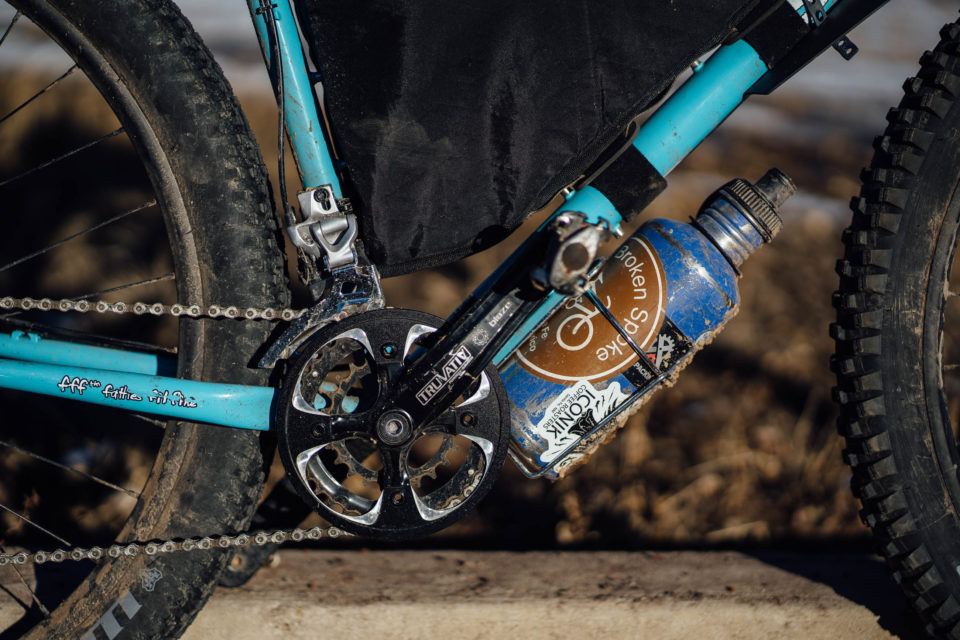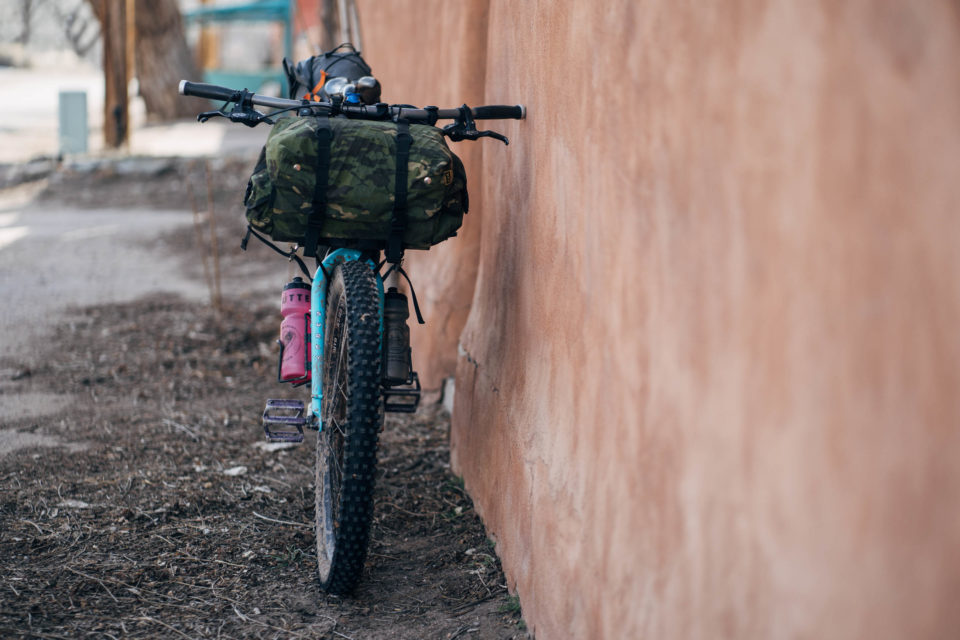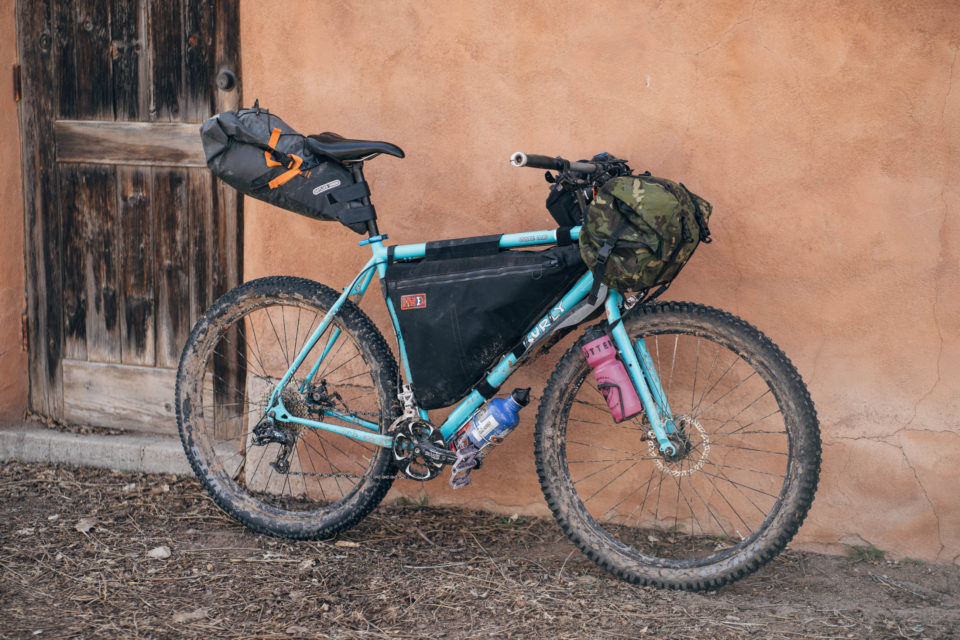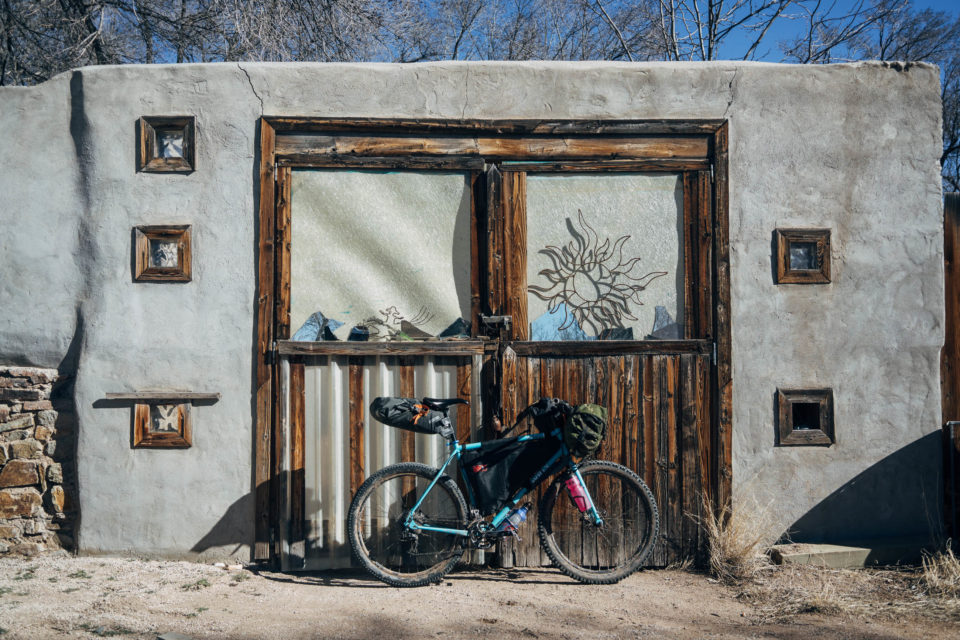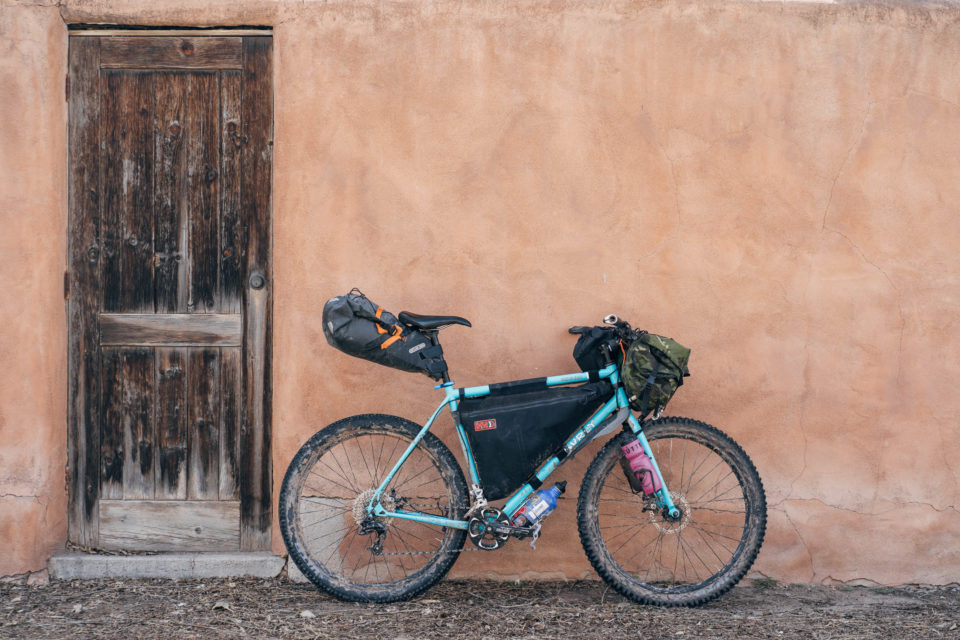Surly Bridge Club Review: Versatility and Inclusivity
Share This
For $1,200, Surly’s Bridge Club claims inclusivity as well as versatility. Cass spends a winter with one, taking it camping, dirt road touring, trail riding, commuting, grocery shopping, and everything else in between…
When the Surly Bridge Club was first announced, I’ll admit that I didn’t know quite what to make of it. Yet another do-it-all off-road touring bike jostling for a spot in the Venn diagram of Surly’s range? Over the last few years, I’ve become so accustomed to touring and bikepacking bikes designed specifically around 27.5+ and 29+ tires that the Bridge Club seemed to fall just a little short. At least on paper.

Then, I thought more carefully about who the bike is intended for. I realised that the Bridge Club simply aims to satisfy the needs of the vast majority of bike tourers and where they really ride. And in adopting more modest ambitions and trimming back the extremes, it comes in at a price point – $1,200 – that’s far more inclusive, cost-wise, than almost anything else of a comparable calibre on the market.
- Highlights
- Angles: 71 Headtube, 73° Seattube
- Chainstay: 455mm
- Bottom Bracket: n/a
- Hub specs: 100mm x 10mm (front), “Gnot-Boost” 10 x 135mm or 10 x 141mm (rear)
- Seatpost Diameter: 27.2mm
- Max Tire Size: 27.5 x 2.8″
- Weight (as tested): approx. 33 lbs (15 kg)
So, in reviewing this bike, my aim was to ride it in ways similar to the bread and butter cycling many of us spend our time doing: commuting around town, dirt and paved road day rides, gravel bike paths, trips to the grocery store, light trail action, and of course overnighters and weekend campouts. Given that the DNA in every Surly yearns for reinvention, I ran it with modern bikepacking gear, then a big Wald basket, as well as a more traditional rack and pannier setup. Whilst the bike comes with a perfectly comfortable Salsa Bend handlebar, sporting a wrist-friendly 17-degree backsweep, I also experimented with all manner of other options, from Nitto’s upright Albatross, to SQ Labs’s 30×16 (with a 45mm rise), to Oddity’s custom Razorbar, to Jones’s 45-degree H-bars.
Setting the tone for the kind of riding it most aspires to, the bike comes shod with 2.4 tires – WTB Riddler Comps, to be specific. Although somewhat heavy for their width, Riddlers are capable all-rounders. They roll well enough on pavement that I didn’t begrudge them on my commute into town, whilst the extra tread meant I never turned down the opportunity for urban singletrack, or shirked taking the long, mixed terrain route home.
But New Mexico abounds with rough and tumble dirt roads, so it wasn’t long before I’d swapped them out for a much chunkier tubeless-compatible WTB Vigilante up front and a WTB Ranger at the back, one of my favourite general duty tires. Both were 2.8″ wide and fit with plenty of room to spare. The Bridge Club’s stock rims are tubeless ready, and with the addition of some tape and a couple of tubeless valves, they set up quickly and easily. Technically, WTB i29s might be considered a touch narrow for a plus-sized tire. In practice, however, the tire profiles looked and felt good. Depending on the particular brand and model, I expect a 2.6″ tire would be about the bike’s sweet spot.
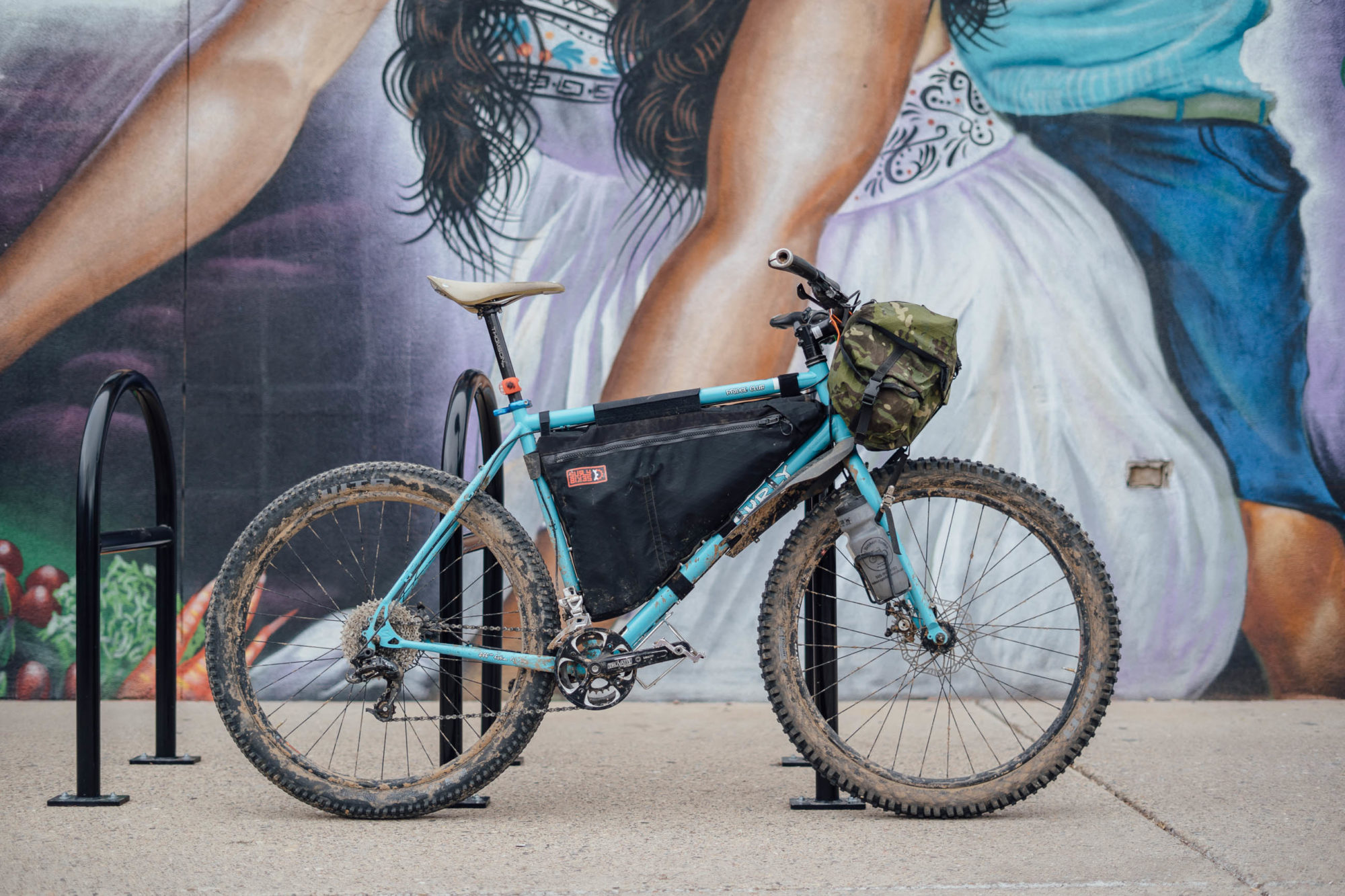
And, as always, what a difference a set of large volume tires can make! The Vigilante/Ranger combo jacked the bike up just enough to decrease pedal strike on singletrack, added confidence on the rocky trails and sandy double track that surrounds where I live, and allowed me to run low tire pressures, a great way of adding comfort to a fully rigid setup. If all-road riding is your jam, I expect the Bridge Club would be pair really well with Schwalbe’s 27.5 x 2.8″ G-Ones for gravel and road outings, shaving 700-800g off the stock complete bike in the process. I bet the G-Ones would be great city riding too, especially if you have potholes and wheel-grabbing tram tracks to contend with. Tire-width related, if you’re considering a Bridge Club as a do-it-all bike, another side benefit to running tire widths no greater than 2.6 or 2.8″ is that multimodal transport is generally straightforward. In contrast, a 3″ tire on a 50mm rim is always a stressful squeeze to fit into the bike rack of a bus.
As for handling, the Bridge club sports similar traits to Surly’s Ogre, which I’ve reviewed with 27.5 x 3″ tires. It’s well balanced, playful to steer, and feels very capable on rough stuff. If anything, it feels spritelier than its big brother. Compare bottom bracket heights across Surly’s off-road touring range and you’ll see that the Bridge Club runs a little lower, when fitted with its stock tires, but is almost the same when swapped out with 2.8s. A lower bottom bracket is great for stability and cornering but can result in increased pedal strikes over more technical terrain. Ultimately, this isn’t a bike that’s been designed for untamed rock gardens, but it will comfortably tackle more modest cross-country trails.
The frame – ED coated, 4130 double butted Chromoly, as per Surly’s usual recipe – is non-suspension-corrected, in tune with the Bridge Club’s price tag and intended uses. The burly tubing is similar to the Troll’s, though the Bridge Club frameset weight is actually marginally lighter. If Diving Board Blue isn’t to your tastes (I think it looks great), you’ll be pleased to know that a stealth-like Dark Black is an option too.
There are five frame sizes available, which means the bike should cater well to those at either end of the stature spectrum. Tall and leggy riders, like me, may find the headtube tube on the short side, as is the case with many bikes on the market. I generally stack up headset spacers like casino chips, but on this occasion, the steerer tube on my demo bike had already been cut shorter than I’d have liked. A good bike shop will wait to chop down the steerer tube until you’ve had a chance to ride your bike, so make you fine-tune your handlebar position before they do. Nowadays, I generally run my bikes with bar that include 30-45mm of rise, so it’s less of an issue than it might be (Surly’s own moto-style Sunrises are a well-priced option if you need a more upright position). Non-storks will delight at the low standover on smaller frames, making this bike well suited to shorter folk.
While we’re on the top of frame sizes, aspiring bikepackers will be pleased to hear that the rigid-specific frameset translates into a framebag size that’s noticeably larger than that it would be otherwise, had the Bridge Club been designed to accommodate a suspension fork. This is good news for a ‘budget’ dirt road touring bike, as you’re unlikely to want to run suspension in the first place, especially with wide volume tires. My test bike came with an XL Surly-branded Revelate framebag, which fit very well. The bike’s fork crown has mounts for Surly’s excellent 8-Pack Rack, to which I zip-tied a Wald 139 basket most of the time. There’s no shortage of brazes-ons elsewhere, either. In a bid to differentiate it from their more devout exploration bikes, Surly suggest that the Bridge Club is not the ‘Swiss Army knife’ that its siblings the Troll and Ogre claim to be. But in the real world, how many of those tools generally go unused?!
As it is, the Bridge Club doesn’t skimp out on what’s important: it has triple mount eyelets on the fork and all the usual suspects for mounting a plethora of racks and water bottles. I fitted one of my favourite rear racks, the minimal and lightweight Tubus Vega, which offered plenty of space for 2.8″ tires on the stock rims. As for the bike itself, there’s clearance for wide trail 27.5 x 2.6″ tires with full fenders. Note that the Bridge Club sports a simple vertical dropout, unlike the all singing, all dancing Troll/Ogre/ECR’s singlespeed and Rohloff-compatible affair. It will, however, run a 135mm Rohloff Speedhub with a Monkeybone and a chain tensioner, thanks to a mount for an OEM 2 axle plate and dedicated cable routing.
In terms of wheelset sizes and options, versatility is the name of the game. It fits 2.8s (724mm diameter) on the stock 27.5″ rims, but will also handle 700c x 47s (716mm diameter) and even 26 x 3″ (722mm diameter) too. Each variation will nudge the bottom bracket up or down. Just halve the difference in wheel diameter to calculate how much. As a general wheel diameter though, the ‘tweener’ 27.5″ rim works well. It’s a size that will work for most statures, it rolls well, and it’s easily found in many parts of the world.
Surly’s unconventional choice of dropout spacing and style – on first appraisal, at least – is also designed with versatility in mind. This 138mm variation on their Gnot-Boost spacing, first seen on the Troll, is perhaps what we’ve come to expect from a brand that keeps practicality to the fore, even if comes at the expense of the latest and greatest performance advantages. At 138mm in width, the spacing is 3mm wider than a traditional 135mm quick release hub, and 3mm narrower than the 141mm quick release hub it comes specced with. Similar in concept to the Surly Crosschecks of old, this makes use of steel’s natural compliance, allowing it to be compatible with two different hub widths, squeezing or stretching the dropout in either direction. It sounds fiddly, but in practice I didn’t even notice any difference when removing and installing wheels, whether to swap them out or fix a flat. Set your bike up tubeless and regular wheel removal largely becomes a moot point. As for running quick release wheels rather than thru axles on a dirt road touring bike, I have no issues there.

Still, why go to the trouble to fit wider than standard quick release hubs in the first place? Well, 141mm hubs serve to improve the chain to tire clearance when designing a bike to run 2.8″ tires, without stretching the chainstays out and affecting its handling. Old fashioned quick releases, rather than more modern thru axles, help to keep the price down, and mean that tracking down a replacement hub, wherever you find yourself in the world, should be straightforward, whether it’s new stock or old. By way of example, I found a decent 700c wheelset for the bargain price of $100 on my local Craigslist, which would have worked perfectly with 40mm WTB Nanos as a lighter, gravel and road orientated wheelset. The rest of the frame is similarly (and reassuringly) ‘low tech’, like the threaded bottom bracket and 27.2mm seat post diameter. This means you can fit parts you may well already own, or bits and pieces that are easy and cheap to find both new and second hand.
Let’s not forget that the Bridge Club is a $1,200 bike – in North America at least – so the stock build won’t be setting hearts fluttering. Still, it uses solid components, none of which I’d rush to replace. The gearing range – a 24/36T double chainring up front and a 10 speed, 11-40T cassette at the back – is especially generous. With a gear ratio of 17 inches, the Bridge Club is a great choice for those who like to load up their bike and head for the hills, or newbie riders who are developing their fitness and strength. When it comes to road riding, the 36T chainring promises a reasonable top cruising speed, too.
In terms of stopping the bike, Promax mechanical disc brakes work well, even if their pad adjustment is awkward. The outboard piston relies solely on cable tension, which means that once you’ve adjusted the barrel adjuster on the levers, the cable will need to be snugged in, which always risks splitting it. Luckily, they’re compatible with omnipresent SRAM BB7 pads, and Promax branded replacements cost an economical $10.
As mentioned before, it’s good to see Surly speccing a relatively wide, tubeless-ready rim on the Bridge Club. Mechanics – and the mechanically minded – may well point out that the Formula cup and cone hubs that they’re laced to offer long term serviceability. I’d argue that most people likely to buy a budget-priced bike may not be so astute. It’s relatively easy for play to develop in hubs without noticing, bringing with it the potential of pitting the cones beyond repair. Speaking from personal experience, I’d prefer sealed bearing models, simply because you can wear them out without fear of damaging your wheelset.
It’s best to make sure this doesn’t happen – if you’re unsure about servicing them yourself, take your bike into your local shop – as in an unfortunate nuance of running a 141mm quick release rear hub, I couldn’t find any reasonably priced wheelsets, with sealed bearing 141mm hubs, that would be easy to change to. Still, if you do wear out the wheels after a couple of years of use, there’s no shortage of more expensive 148mm Boost thru-axle options that would work, once swapped out with quick release end caps, because the actual hub width is the exact same for 141mm QR and 148mm TA. Confusing, right?!
Not wishing to muddy the waters of wheel compatibility further – but merely navigate through them – I expect that by keeping to the stock 2x drivetrain, you would find no issues in running an easily sourced 135mm quick release rear hub and a 2.8″ tire. Fit a 1x drivetrain, on the other hand, and you’re likely to experience the chain rubbing the tire in the lowest gear, collecting mud and muck in the process, which is where the Boost spacing comes into play.
It’s a small quibble, but I also swapped out the quick release skewers for a set of Shimano-branded ones I had spare, as the stock models didn’t engage as positively as I’d have liked.
Although my test bike came with a Truvativ crankset that uses an ISIS splined bottom bracket, the stock version is listed with a 118mm square taper model from FSA, offering a similar, wide-tire-friendly chainline to Boost, albeit on the cheap. Finding a replacement bottom bracket should be fairly easy; many bike shops keep basic parts in stock, or can at least dig one out for you. If embarking a long tour, I’d suggest replacing the bottom bracket if it’s showing any hint of wear, to be on the safe side. Ultimately, internally positioned, square taper bottom brackets last considerably longer than external cups, so it’s unlikely to be an issue. Being square taper, I’d also advise checking the cranks every once in a while to make sure there’s no play between the arm and the spline, so you don’t risk them rounding out. If there is, tighten the bolts up. The rest of the drivetrain is a happy mashup of SRAM, Shimano, KMC, and SunRace parts, with reliable shifting and no issues to report during the long winter I rode the bike.
As a global footnote, I should add that not everyone gets as good of a deal as US residents on the Bridge Club. In the UK, the bike translates to a more expensive £1,400, though don’t forget to add in US sales tax when comparing prices. At $1,800 CAD, Canadians get a little stung too.
- FRAME Surly Bridge Club, double butted Chromoly
- FORK Surly Bridge Club
- F. DERAILLEUR Shimano Deore
- R. DERAILLEUR SRAM GX
- SHIFTERS SRAM X5
- HEADSET Cane Creek 40, 1-1/8″
- REAR TIRE WTB Riddler comp 27.5×2.4″
- FRONT TIRE WTB Riddler comp 27.5×2.4″
- REAR HUB Formula 32h QR
- FRONT HUB Formula 32h QR
- RIMS WTB STPi29 TSC
- FRONT ROTOR 160mm
- REAR ROTOR 160mm
- BRAKES Promax DSK-300
- CRANKSET FSA Alpha Drive 36/24t
- BOTTOM BRACKET FSA Square Taper
- CASSETTESunrace 11-40t, 10 speed
- HANDLEBAR Salsa Bend
- STEM Promax
- SADDLE WTB Volt Sport
- SEATPOST Promax 27.2 350L, offset
- GRIPS Velo Lock-on
Pros
- Affordable yet still very capable
- Agile ride with a tubeset that’s stout enough to carry weight
- Practical tire clearances, for a wide variety of wheel sizes
- (Almost) all the braze-ons you’d expect from a Surly
- Tubeless compatible rims (but not tires)
- Excellent gear range for loaded touring and those new to bikepacking
- Older, more established standards mean a secondary wheelset becomes eminently affordable
Cons
- 141mm wide rear hub is cup and cone, with no cheap options available for replacements (though there plenty of expensive ones)
- Stock tires are relatively heavy and wire bead
- Old fashioned bottom bracket system (though it should offer many miles of service)
- Mechanical brakes are fiddly to adjust (but powerful)
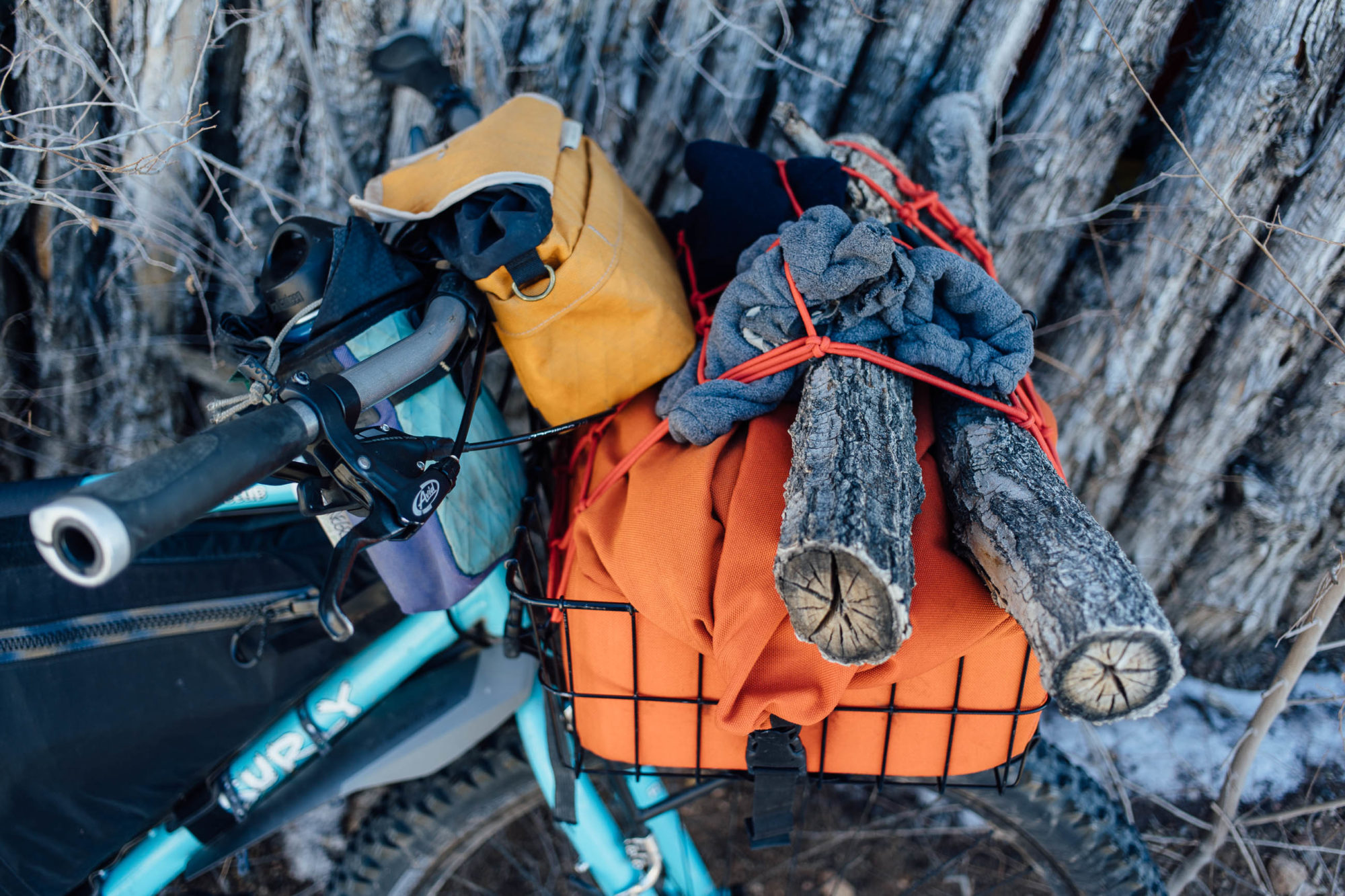
- Model/SizeSurly Bridge Club XS, S, M, L, XL (tested)
- Weight (as tested) About 15kg
- Price $1,200
- Place of Manufacture Taiwan
- Manufacturer’s Details Surly Bikes
Wrap Up
Priced to appeal to anyone considering a first ‘proper bike’ that can handle almost anything that’s likely to be thrown at it, be it general riding, dirt road touring, or mellow bikepacking, I’d consider the Bridge Club a resounding success. It’s as if Surly has taken a step back, in a good way, to appraise the lay of the land. What are people really going to be doing with this bike?
Even if it’s a theoretical notch down from what I usually ride, the Bridge Club quickly became the bike I reached for most often: perfect for exploring my local dirt roads, fun on trails, practical for commuting, and modest enough in appearance that I’ve never worried about locking the Bridge Club around town. Had this bike been available when I first started off-road touring – back when I was blissfully naive to the ‘benefits’ of spending thousands of dollars on a bike – I’d have jumped on it, no questions asked.
And despite its relatively low price, there’s absolutely nothing I’d rush to upgrade for day-to-day use. Sure, I’d like to have seen tubeless ready tires and sealed bearing hubs to complement the stock wheels. But make sure you look after them and they’ll be fine, and upgrade the tires when they wear out. In fact, having had plenty of time to experience how adept this bike really is, I’d have a hard time justifying the more expensive Troll or Ogre for the vast majority of off-road bike touring trips, both local and further flung. This is a bike built for purpose: to be versatile, capable, and above all, inclusive.
Rider’s Background
I’ve been embarking regularly on two-wheeled explorations for the last 20 years. Most recently, I explored the Republic of Georgia on dirt roads, rode the Colorado Trail, traversed Bolivia’s Cordillera Real, and followed the Trans Alps from Germany to Italy. Given my love for mountain biking and backcountry touring, my ideal journey fuses the two, keeping to quiet dirt roads and singletrack where possible.
Height: 6’1”/1.85m
Weight: 165 lbs/75kg
Inseam: 35”/89cm
Please keep the conversation civil, constructive, and inclusive, or your comment will be removed.






